cassava processing factory
cassava processing factory-interior design for cassava starch processing factory-plan for cassava flour processing plant
cassava starch production line includes (Raw material handling capacity per hour): 5 tons / hour, 10 tons / hour, 15 tons / hour, 20 tons / hour, 60 tons / hour, 100 tons / hour, 300 tons / hour.
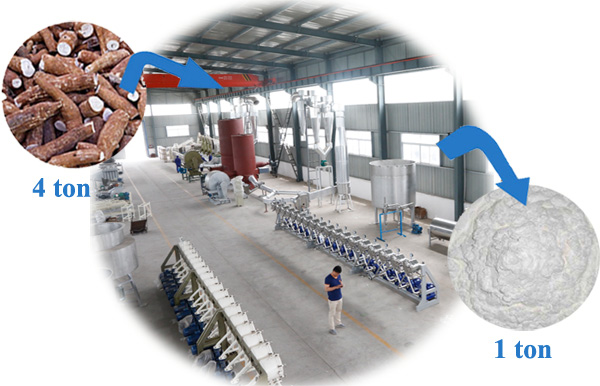
DOING cassava starch making machine is simple in structure and easy to operate, and the entire production line can be operated by just a few people. DOING engineers are also available for overseas to instruct the equipment installation, commissioning, and training of workers to use the equipment. Below we highlight several complex cassava starch making machine.
Rasper: Rasper is a commonly used cassava starch making machine used for cassava grinding in modern cassava starch processing plant. This equipment has high efficiency of grinding, high starch extraction rate and high output.
The principle of the cassava starch making machine is very simple, that is, using a high-speed boring tool to break the cassava to release the starch granules. The following matters should be paid attention to during operation in order to improve efficiency and extend the service life of the equipment.
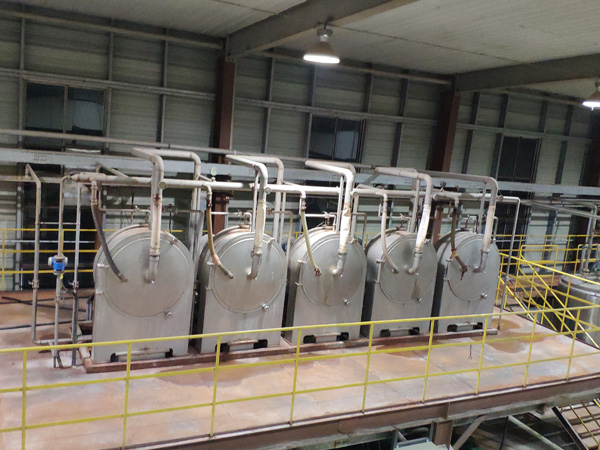
The operator needs to pay attention to the motor temperature and machine sound during operation. If the sound of cassava starch making machine suddenly becomes smaller, it means that there is too much material in the rasper, and the feeding amount should be reduced appropriately.
In the economic accounting of starch plants, water consumption and starch yield are two important indicators. DOING high efficient rasper can ensure high starch yield. As for water consumption, when using this cassava starch making machine, in the process of adding water and using the return water, the water volume should be appropriate, too little water can not wash away the broken material, too much water will cause waste.
Hydrocyclone system: The protein content is a key indicator for testing the quality of starch. Excessive protein content will directly affect the use of starch. For example, in the case of glucose injection, if the starch with too high protein is used, there will be mildew and white spots, so the cassava starch making machine used to reduce the protein content in starch is crucial.
Most of the starch produced by using the traditional method usually adapts the method of pool sedimentation to remove the protein, which takes up a large plant site and can not effectively remove protein impurities, which not only affects the quality of starch but also restricts the yield.
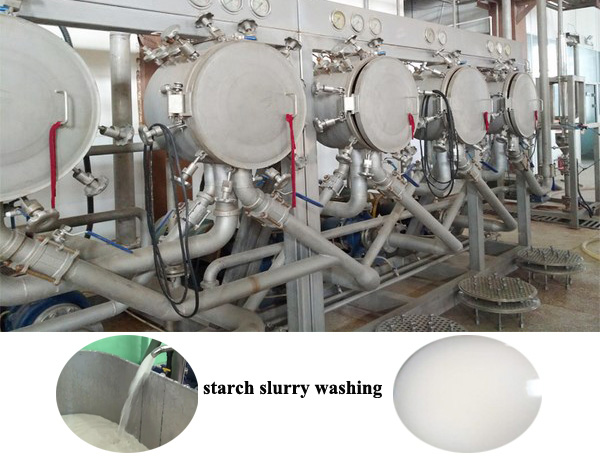
The cassava starch making machine used for starch concentration and refining by Doing Company adopts the advanced hydrocyclone system of European process, which combines protein separation and starch washing in one. The working principle of the hydrocyclone system is to take use of the centrifugal force generated by the high-speed rotation of the cyclone tube to separate starch and protein impurities. Due to the yellow pulp and the starch has different gravity, so that the heavy material flows down the pipe wall and is discharged through the bottom flow port. The light material rotates upward at the center and is discharged by the upper overflow port.
tapioca processing machine, can help you to design and construct your tapioca flour plant, equipped with the complete set of equipment and the advanced tapioca flour extraction technology. The tapioca flour in most time called as cassava starch, it's more and more popular in the world, widely used in industrial production. Next is Henan Doing Machinery supplied tapioca flour plant and the main tapioca flour processing machine introduction:
(1) Raw material receiving unit: The fresh tapioca is carried besides the storage pool after weighing. Firstly, it goes through the dry sieve for removing the stones and sand. Then the pre-cleaned tapioca falls on the belt conveyer and enters into the storage pool, then the rubbish will be carried away by truck.
(2) Water transport unit in the tapioca flour plant: The exit of the storage pool is water transportation channel. The tapioca will be sent by water force into de-stone machine. Meanwhile, the remaining sand and dirt will be again cleaned out by rolling and friction.
(3) De-stone and washing unit: Tapioca is transferred into the screw destone machine to be cleaned by water flow. The small sand and stone go through the rotary screen then meet with bigger size stone which was stopped and sent back to the entrance of de-stone machine. Most of sand and stone are removed out of de-stone machine adopted in the tapioca flour plant. The tapioca then goes into rotary cleaning machine for further removing of dirt and broken chips. Cleaned tapioca falls on a checking conveying belt equipped with nozzles for washing the surface of tapioca. Workers can manually take out the rotten tapioca, wooden and plastic items. At the end of belt, the iron remover is installed for removing metal impurities used in the tapioca flour plant.
Then the tapioca is sent by bulk elevator into temporary storage in which it can stay 2 hours.
(4) Milling unit: The milling unit is the most important step for extracting starch in the tapioca flour plant. Newest and advanced technology adopted the rasping machine for tapioca crushing, the feeding screw combined at bottom of the storage tank pumped the clean tapioca into milling machine. Highly-efficient milling machine will release the tapioca flour at most.
(5) De-sanding cyclone unit: After milling, the starch milk is transferred to de-sanding cyclone by fiber pump. The hydro-cyclone divide the milk into two parts: the light part which contains the mixture of starch and residue will go out from top of the cyclone, and the heavy part which contains the sand will be discharged out of the tapioca flour plant de-sandiing system.
(6) Centrifugal extracting unit: The mixture is transferred to the 3 stage centrifugal sieves, each sieve works with a fiber pump and a defoam pump. The mixture enters into each sieve to separate residue and starch. After 3 stages continuous washing and separation in your tapioca flour plant, the filtrate is sent to concentration and refining unit, and the residue is sent to the residue dewatering unit.
(7) Tapioca residue dewatering unit: The tapioca residue will be pumped to the centrifugal sieve for dewatering, the centrifugal sieve works like the extraction sieve. Then the screw conveyor discharges the residue out of the process, and the water will go back to the process water system. This unit used to recovery of residual starch, this also keep the starch yield in the tapioca flour plant.
(8) Concentration and refining unit: The starch milk from centrifugal sieve goes into the 16 stages of refining hydro-cyclone, and fresh water comes into the cyclone from the end of system. Firstly, starch milk is pumped into 3 stages of concentration unit to remove the water, then the condensed starch milk enter the next 13 stages of washing unit, and the overflow enters into another 2 stages of recycle unit to recycle starch. Most of the effluent with fiber is discharged out of the process, and a little part goes back to the process water system. Finally, the condensed starch slurry is pumped into the starch slurry storage tank. This section adopted the hydrocyclone station to complete in the tapioca flour plant.
(9) Vacuum dewatering unit: The starch slurry is pumped into inlet tank of vacuum dewatering machine. Then the vacuum rotary drum will adsorb the starch on the drum surface and the filtrate is transferred out of the system by filtrate pump. The filter cake on the drum will be peeled off by peeler and then transferred to the air dryer by screw conveyor. This vacuum filter adopted keep the tapioca flour plant operation continuously
How much does a cassava starch Read More
How much does a cassava starch machine cost - The price of a cassava starch production line machine...
The cassava starch production lRead More
The following are the main steps and equipment components of a typical cassava starch production line:Cleaning and peeling: Clean the harvest...
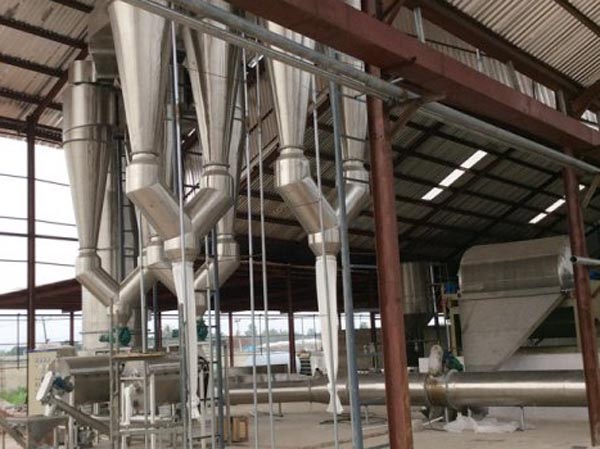
scale cassava flour processing
This is the second time that a Nigerian customer has purchased cassava processing equipment from SDA Holdings-Kaifeng SDA Agricultural Equipment Engineering Co., Ltd. Nigerian customers have previously purchased a cassava peeling machine. SD
Read More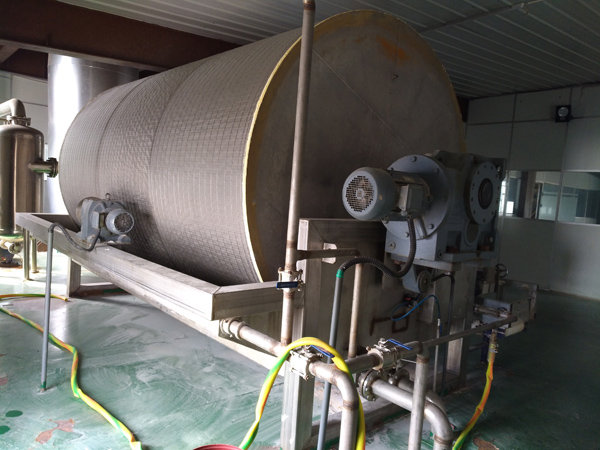
Cassava starch production plant
Cassava starch production plant installed in Nigeria,One day processing 100 tons of tapioca starch processing machinery and equipment,We provide customers with tapioca starch processing machine turnkey engineering
Read More



 machine366@outlook.com
machine366@outlook.com




